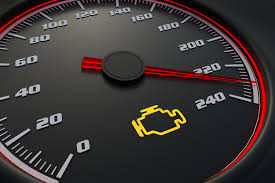Seeing your check engine light illuminate on your dashboard can be concerning. While it may indicate a minor issue, it can also signal a serious problem that requires immediate attention. Understanding what to do when this light appears can help prevent costly repairs and ensure your vehicle remains safe and reliable.
Common Reasons for a Check Engine Light
1. Loose or Faulty Gas Cap
A loose or damaged gas cap can cause the check engine light to turn on due to fuel system pressure loss.
What to Do: Tighten the gas cap or replace it if damaged. The light should turn off after a few drive cycles.
2. Oxygen Sensor Failure
The oxygen sensor monitors the amount of unburned oxygen in the exhaust system and helps regulate fuel efficiency.
What to Do: Have the sensor inspected and replaced if necessary to avoid reduced fuel economy and increased emissions.
3. Catalytic Converter Issues
A failing catalytic converter can lead to poor performance, higher emissions, and potential engine damage.
What to Do: If your vehicle is experiencing sluggish performance or decreased fuel efficiency, have the catalytic converter checked by a mechanic.
4. Faulty Spark Plugs or Ignition Coils
Worn-out spark plugs or ignition coils can cause engine misfires, rough idling, and reduced fuel efficiency.
What to Do: Replace faulty spark plugs or ignition coils as recommended by your vehicle’s manufacturer.
5. Mass Airflow Sensor Failure
This sensor measures the amount of air entering the engine, ensuring the correct fuel mixture.
What to Do: Clean or replace the mass airflow sensor if the engine is running rough or if acceleration is affected.
6. Issues with the Battery or Charging System
A weak battery or faulty alternator can trigger the check engine light and lead to electrical system malfunctions.
What to Do: Have the battery and charging system tested and replace any failing components.
Steps to Take When Your Check Engine Light Comes On
1. Don’t Panic
A steady light typically indicates a non-urgent issue, while a flashing light means a more serious problem requiring immediate attention.
2. Check for Obvious Issues
Inspect your gas cap, listen for unusual engine sounds, and monitor vehicle performance.
3. Use an OBD-II Scanner
An onboard diagnostic (OBD-II) scanner can read trouble codes to help identify the issue.
4. Schedule a Diagnostic Check
If you’re unsure about the cause, visit a professional mechanic for a thorough inspection and necessary repairs.
Final Thoughts
Ignoring the check engine light can lead to severe engine damage and expensive repairs. By addressing the issue promptly, you can keep your car running efficiently and safely.
If your check engine light is on, visit our shop for a diagnostic service today!

